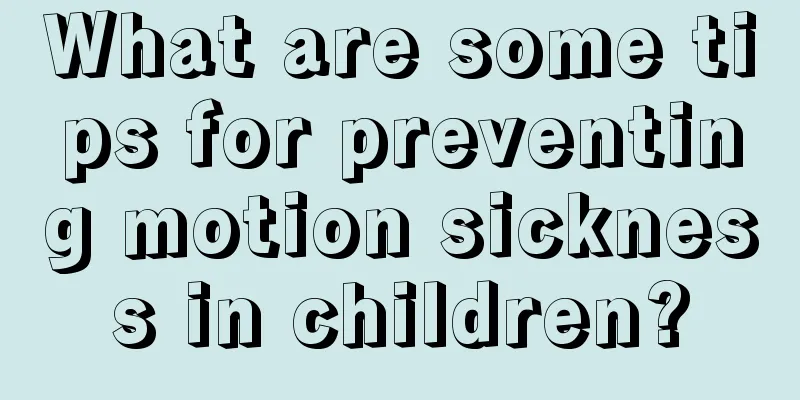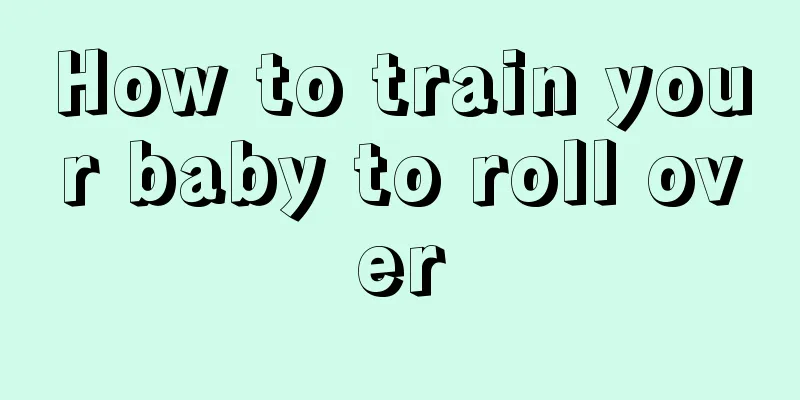How many days does it take for the rash to appear?

|
Roseola infantum is a very common disease characterized by fever and rash. When a baby suffers from roseola infantum, parents need to pay attention to it, especially in spring and autumn, which is the peak season for roseola infantum. It needs special attention. Babies with roseola infantum have a more serious fever and need to go to the hospital for treatment in time, and they also need to be well cared for. How many days does the rash last? How many days does it take for the rash to appear in infants ? Roseola infantum is a viral bacteria. Most medicines are ineffective. It is a process. The fever lasts for 3-5 days, the fever subsides and then the rash appears. It takes 3-5 days for the rash to appear and then start to subside. During this period, mothers must be careful not to let the baby be exposed to the wind. It is best not to take a bath because the baby's resistance is poor during this period and they are afraid of catching a cold. Don't cover the baby with too many clothes, as long as they are not cold. Generally, the symptoms will disappear in seven days and you can't see them anymore, but it will take about half a month to completely disappear. Symptoms of roseola infantum Roseola infantum is mainly characterized by high fever and rash. It is a common viral rash disease in infants and young children. Babies with roseola infantum will suddenly develop a high fever, and their temperature can rise to 40°C or higher within a few hours. After 3-4 days of continuous high fever, the body temperature drops suddenly, and at the same time or later, a light red maculopapular rash will quickly appear on the skin. The rash is mostly scattered and can be seen all over the body, but is less common on the face and distal limbs. The rash disappears quickly within 1-2 days after it appears, leaving no pigmentation or desquamation. Roseola infantum has an incubation period of 1-2 weeks. Before the onset of roseola infantum, the baby is different from usual, looking poorly and listless. The head feels hot when touched and the body temperature is around 38 to 39 degrees. Sometimes symptoms such as a mild cough and a small amount of clear nasal discharge may occur. When the fever reached a high level, the child's mental state returned to normal and systemic symptoms were mild, with only a slight red throat and sometimes a mild cough, but no other obvious signs. However, convulsions may occur in the event of a sudden high fever, so you should be careful. After the fever subsides on the 4th day, the baby will start to develop a rash on his body. Small red rashes like mosquito bites will appear on the baby's chest and back. These rashes will gradually spread at night and even affect the face, neck, hands and feet. At this time, although the baby's fever has subsided, he or she may still be lethargic and cry a lot. On the 3rd or 4th night, your baby may also have loose stools. Generally, full recovery takes place on the 5th or 6th day, when the baby's rash becomes less and his spirit returns to his normal state before the onset of the disease. Only then can it be said that he has recovered. Nursing care for infantile rash 1. When your baby has a fever, you should go to the hospital first and listen to what the doctor says. Do not give your baby any medicine casually. 2. When caring for your baby, pay attention to feeding him plenty of water and mainly liquid or semi-liquid food to replenish the water lost by the body due to high fever. 3. Give your baby appropriate supplements of vitamin B and vitamin C. 4. Try to avoid taking your baby to outdoor activities as much as possible, pay attention to isolation and avoid cross infection. 5. Keep your baby's skin clean and hygienic, and wipe off the sweat on your baby's body frequently to prevent him from catching a cold. 6. When the baby's body temperature exceeds 39°C, you can wipe the baby's body with warm water or 50% alcohol to prevent the baby from having convulsions due to high fever. 7. Let your baby rest more and ensure that he gets enough sleep, which is conducive to physical recovery. In addition, the room should be quiet, the air should be fresh, and the quilt should not be too thick or too much. |
<<: Can I take a bath if I have roseola infantum?
>>: How long does it take for the rash to reappear after the fever subsides?
Recommend
How long does it take for baby malnutrition to heal?
Many people who have not been mothers are not ver...
What causes children's morning cough?
Coughing is a normal reaction of our body. Althou...
What should I do if my baby's hand is burned?
As the baby grows, parents need to be particularl...
What should I do if my baby has eyelid edema?
What causes children’s swollen eyes? In fact, swo...
What diseases are related to the blue veins on the baby's head?
Parents pay a lot of attention to their children,...
What to eat when a six-year-old child has a cough
Coughing is a condition that we all experience in...
Why does my baby have a runny nose when crying?
Whenever the baby at home cries loudly, many moth...
Baby head shape corrector
After a newborn is born, parents should prepare a...
How many times a day should a full-month baby eat milk
A one-month-old baby's organs have developed ...
How to remove baby’s tongue coating?
The baby's physical condition is of great con...
What are the reasons why children have fever but no fever?
For infants and young children, because they are ...
What is the disease that causes pain in the lower left abdomen in young children?
Children are the sky of every family and are ange...
Mycoplasma transmission in children
There are always some infectious diseases in life...
What is causing the intermittent pain on the right side of a child’s abdomen?
We often hear people talk about intermittent pain...
Children's trace element lead exceeds the standard
When it comes to the issue of trace elements, man...









